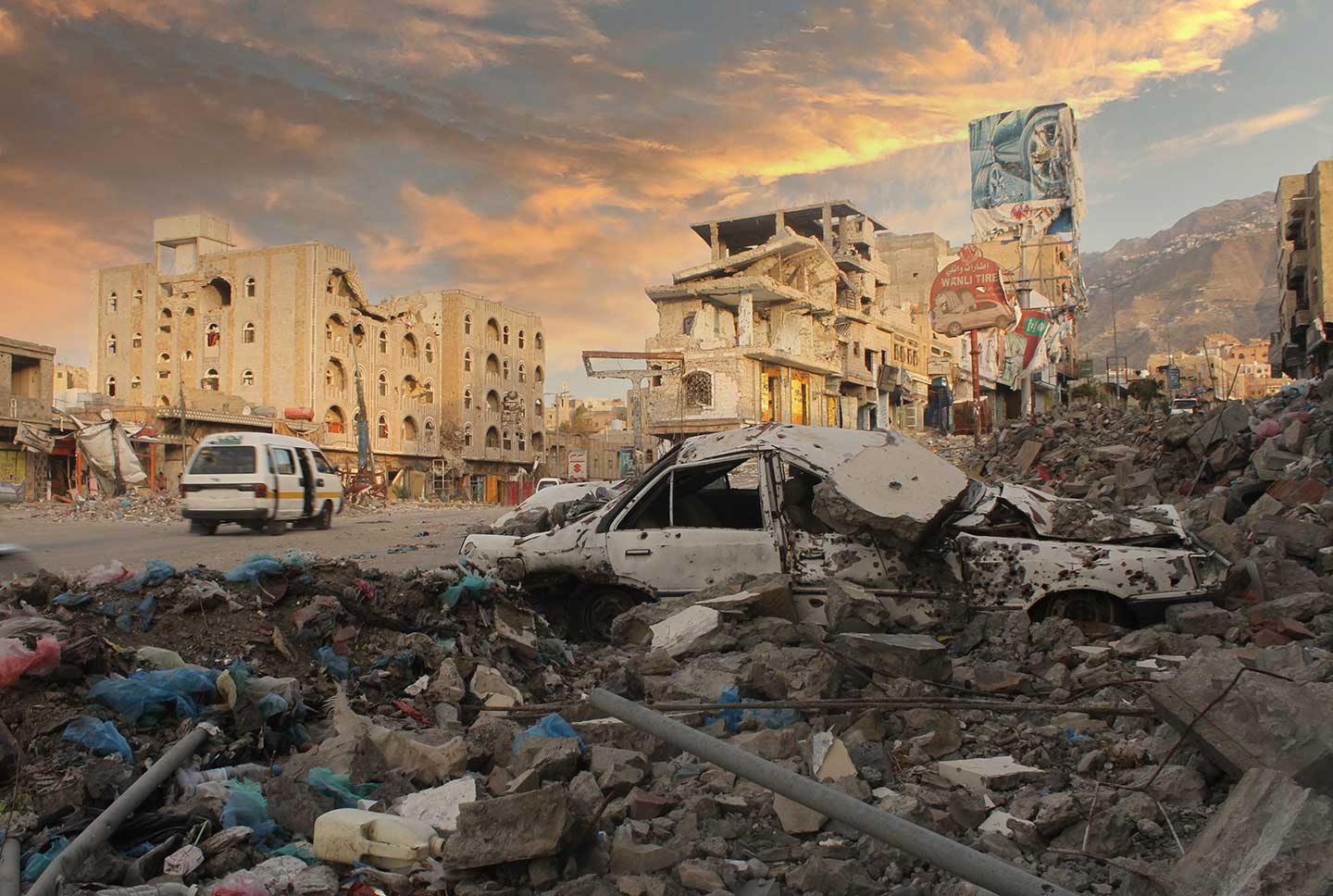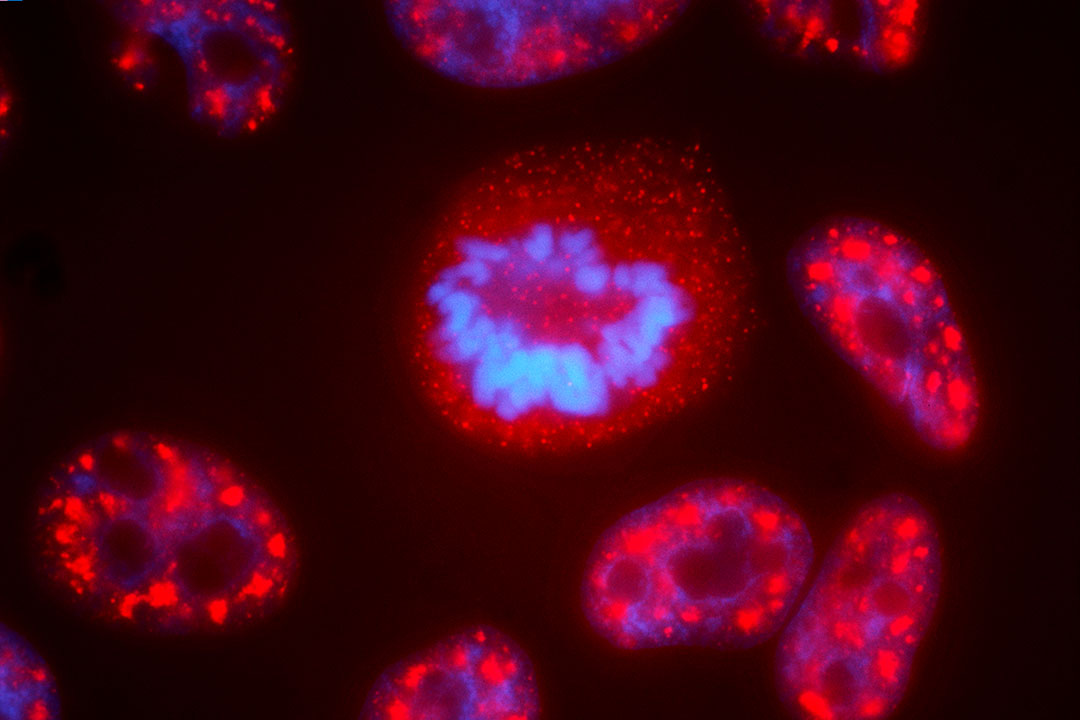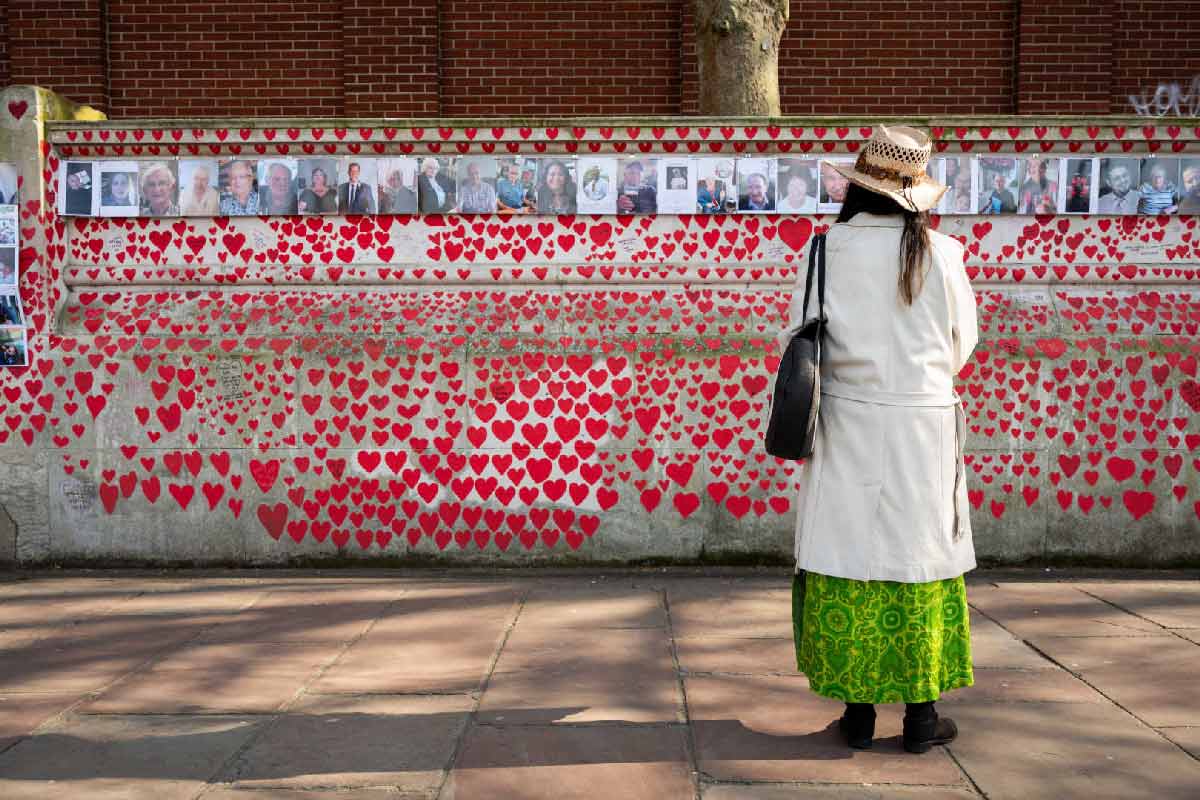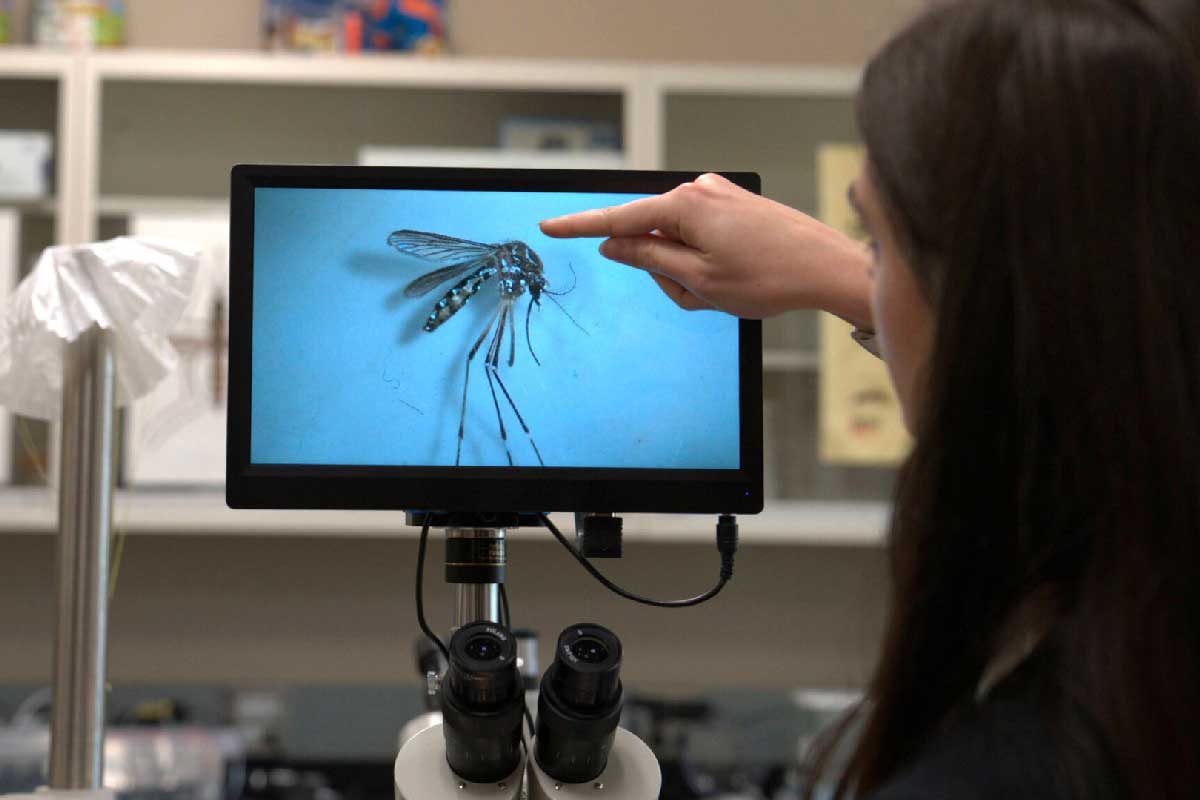Humanitarians Push to Vaccinate in Conflict Zones
Pandemic ceasefires offer an opportunity to expand vaccination efforts, experts say. But negotiation is tricky.
- 31 August 2021
- 8 min read
- by Undark

On March 23, 2020, with the deadly coronavirus reported in 167 countries and territories, United Nations Secretary-General António Guterres called for a global ceasefire to support a public health response. It was the first global ceasefire appeal since the agency was founded in 1945, in the aftermath of World War II. “The fury of the virus illustrates the folly of war,” Guterres said. “End the sickness of war and fight the disease that is ravaging our world.”
On the ground, little changed. More than a dozen armed groups, from the National Liberation Army in Colombia to the Communist Party of the Philippines, initially endorsed Guterres’ appeal, but most offers to lay down arms were either one-sided or did not culminate in a formal ceasefire agreement. A U.N. Security Council resolution that July, which affirmed Guterres’ plea, also went nowhere. By fall 2020, the idea of a global ceasefire — which, in all of world history, has never taken place — was off the table.
On February 26, 2021, the Security Council tried another tack. It passed Resolution 2565, which less ambitiously but more pragmatically called for a “sustained humanitarian pause” in order to immunize the world. In this case, there were recent historical precedents: In the 1960s, representatives from the World Health Organization launched its intensified program to eradicate smallpox — focusing on countries such as Ethiopia and present-day Bangladesh, where the disease was endemic and where public health officials had to work around conflicts in order to bring lifesaving vaccines to civilians.
This triumph of public health diplomacy will have to occur once again, humanitarian professionals say, in order to bring the Covid-19 pandemic to an end. From Afghanistan to Myanmar, Nigeria to Azerbaijan, people caught amid violence and instability will need to be immunized. Public health experts fear that if conflict zones don’t receive vaccines soon, these places could become hot spots for transmission and incubators for potentially dangerous variants of SARS-CoV-2, the virus that causes Covid-19.
But hammering out temporary ceasefires won’t be easy. The political situation is more complex now than in the past, in part because of the abundance of nonstate actors like al-Qaida and the Islamic State of Iraq and the Levant (ISIL) that control large swaths of land, and are not necessarily eager to give governments credit for vaccination campaigns. Additionally, public health officials say, vaccine hesitancy and other pressing needs threaten to sabotage vaccination efforts. In Afghanistan, where the Taliban has recently recently taken over, Covid-19 vaccinations have already slowed.
Still, humanitarian negotiators are pressing ahead. “That’s the reality of our profession — that we never give up,” said Katia Papagianni, director for mediation support and policy at the Center for Humanitarian Dialogue, a Swiss-based private diplomacy organization. These negotiations are informed by the growing recognition that, in order to successfully broker time-outs in fighting for “humanitarian access,” mediators must engage with teachers, respected elders, women’s groups, local businesspeople, and other community leaders.
Have you read?
“It is not rocket science,” Charles Deutscher, a policy adviser for the International Committee of the Red Cross (ICRC), wrote on the organization’s Humanitarian Law & Policy blog in March. “It’s investing time and showing empathy — drink more tea, sit with people, and listen to them to understand their concerns, cultures, and creeds before coming at them with a needle.”
And when it comes to dealing with warring factions, those in the field say, it’s essential to stay politically neutral and to continually nurture the conditions for peace. “You literally have to negotiate every day,” said Papagianni. “You may negotiate every morning and every afternoon, if that’s what’s needed.”
Dee Goluba, senior director of field security for the humanitarian aid organization Mercy Corps, added that conflict parties will only allow aid workers access who have proven themselves to be outside of the fray, completely impartial. Humanitarian personnel must be “perceived as not helping the other combatants,” she said. “Trust is everything.”
Though the WHO’s smallpox eradication campaign was not history’s first global vaccination drive — that honor belongs to the Spanish government’s worldwide immunization effort against smallpox, which began in 1803 and deployed Edward Jenner’s early vaccine — the WHO’s program was the first and only to eradicate a human infectious disease.
Smallpox was the ideal target, in large measure for reasons that distinguish it from Covid-19. The smallpox virus can only be spread by people, meaning there were no hidden animal reservoirs, unlike the various species of bats and other mammals that harbor strains of coronavirus that have jumped to humans. Smallpox’s symptoms were distinct and easy to identify, and the virus was not spread by asymptomatic carriers. There was a stable and highly effective vaccine. And smallpox lesions, which could scar a victim for life, were universally feared, regardless of politics. The United States and the Soviet Union — bitter Cold War adversaries — joined forces to rid the world of the disease.
Even with these advantages, expunging smallpox from the planet was a formidable undertaking. “It required the cooperation of all countries throughout the world and the active participation of more than 50,” wrote the campaign’s director, the legendary Donald A. Henderson, in 2011. The final push of smallpox eradication — one of the landmark achievements in public health — took place from 1976 to 1977 and had to work around wars in Ethiopia and Somalia.
In 1995, former President Jimmy Carter negotiated the “Guinea Worm Ceasefire” during a fierce civil war in Sudan. The nearly six-month-long pause in fighting was, at that time, the longest humanitarian ceasefire in history. It enabled health workers to care for those suffering from Guinea Worm Disease, a gruesome parasitic infection, and distribute aid and preventive health measures.
Perhaps the most fitting contemporary precedent was the 1980s launch of a series of pauses in fighting to facilitate childhood immunization campaigns. The first attempt was in 1985 in El Salvador, a country then in the throes of an ongoing civil war. UNICEF director James Grant was inspired by the concept of “children as a zone of peace,” which called for children to be protected in conflict zones — an ideal he thought even antagonists with guns could agree on. Shuttling between the government of then-president José Napoleón Duarte and the Farabundo Martí National Liberation Front (FMLN) rebels, and relying on support from the Catholic Church, Grant negotiated three “days of tranquility” — temporal islands of calm that allowed health workers to immunize children against polio, measles, diphtheria, tetanus, and whooping cough. Those first three days saw at least 250,000 children receive vaccinations; the pause in fighting occurred every year through 1991, dramatically reducing the incidence of measles and tetanus and helping eradicate polio in the country.
The “days of tranquility” model was taken up by the Pan American Health Organization for its “Health as a Bridge for Peace” program, which drew on effective communications and broad partnerships with local communities around planning and vaccine rollout to ensure success; the framework was adapted by the WHO for other parts of the world. During cessations of hostilities in the 1980s and 1990s, standard immunizations reached children in countries including Afghanistan, Cambodia, Lebanon, and Sudan.
In 2021, the notion of Covid-19 “days of tranquility” seems inconceivable. That’s because most armed conflicts of late are waged not between countries but within the boundaries of nation-states, according to a 2018 report from the Peace Research Institute Oslo. The ICRC estimates that more than 50 million people live in territories fully controlled by armed nonstate authorities, and some 100 million live in areas where control by these groups is more fluid.
This breed of conflict is protracted and open-ended. An ICRC assessment in 2016 found that the average length of time the agency spent in the countries hosting its 10 largest operations was more than 36 years. As of August 2021, the organization counted 605 armed groups in 44 nations that posed a concern to its humanitarian work; ICRC negotiators have maintained contact with 415 of these groups. Experts from the organization noted in March that “in some of the most complex recent conflicts, analysts have observed hundreds, if not thousands” of armed contingents present in a single country.
These groups “rapidly factionalize; opposing sides lack the funds or command structure to achieve definitive dominance; the conflicts multiply and move across populated terrain; and the fighting drags on for decades,” said Jennifer Leaning, a senior research fellow and former director of the François-Xavier Bagnoud Center for Health and Human Rights at Harvard University, at a workshop on mental health in the Middle East in 2014. Nowadays, she continued, it's clear that “the primary pattern of war is intrastate, communalized, or sectarian. These conflicts are waged by nonstate actors untrained in or dismissive of the laws of war, or are waged by oppressive, brittle, or failing states against stigmatized groups of their own citizens or residents.”
Continue reading the original article here.

Author
Madeline Drexler is a Boston-based journalist and a visiting scientist at the Harvard T.H. Chan School of Public Health. She is the former editor of Harvard Public Health magazine.
This article was originally published August 25, 2021 on Undark.
More from Undark
Recommended for you









